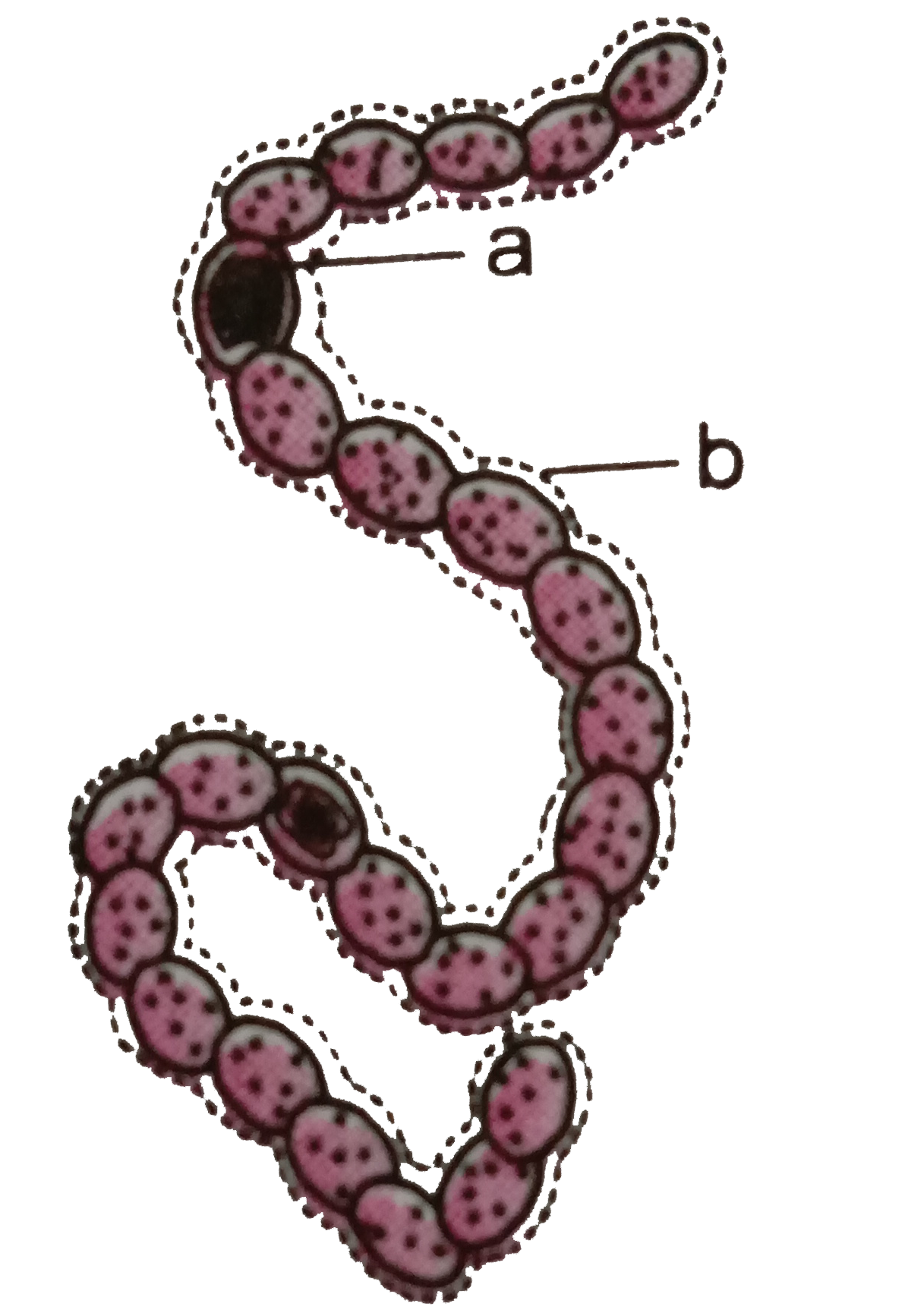In the adjacent figure of a typical dicot embryo, label the parts (1),(2) and (3) . State the function of each of the labelled part.

Video Solution
Text Solution
Label 1 : Origin of plumule , plumule grows into shoot
Label 2 : Cotyledons , Food storage
Label 3 : Origin of radicle , radicle grows into root
|
Topper's Solved these Questions
- REPRODUCTIONBook:TRUEMAN BIOLOGYChapter:REPRODUCTIONExercise:SECTION-D
Explore 27 Videos
- REPRODUCTIONBook:TRUEMAN BIOLOGYChapter:REPRODUCTIONExercise:SECTION-B
Explore 39 Videos
- Protista Book:TRUEMAN BIOLOGYChapter:Protista Exercise:ASSERTION AND REASON
Explore 5 Videos
- Reproduction In OrganismsBook:TRUEMAN BIOLOGYChapter:Reproduction In OrganismsExercise:MULTIPLE CHOICE QUESTION
Explore 128 Videos
Similar Questions
Knowledge Check
Identify the labelled part
 Aa- heterocyst, b-mucilaginous sheathBa- mucilaginous sheath, b- heterocystCa- heterocyst, capsidDa- pseudopodia, b - mucilaginous sheath.
Aa- heterocyst, b-mucilaginous sheathBa- mucilaginous sheath, b- heterocystCa- heterocyst, capsidDa- pseudopodia, b - mucilaginous sheath.The function of labelled part X is
 AdehiscenceBmechanicalCnutritionDprotection
AdehiscenceBmechanicalCnutritionDprotectionStudy the given figure of a typical dicot embryo, Select the right option in which all the labelled parts as A, B and C are correctly matched with their respective functions
 A A B CRedicle root system formation Plumule shoot system formation Endosperm food storageB A B CRedicle root system formation Plumule shoot system formation Cotyledon food storageC A B CPlumule shoot system formation Radicle root system formation Cotyledon food storageD A B CPlumule shoot system formation Radicle root system formation Hypophysis formation of radicle
A A B CRedicle root system formation Plumule shoot system formation Endosperm food storageB A B CRedicle root system formation Plumule shoot system formation Cotyledon food storageC A B CPlumule shoot system formation Radicle root system formation Cotyledon food storageD A B CPlumule shoot system formation Radicle root system formation Hypophysis formation of radicle
Identify the different parts of a typical dicot embryo labelled as A,B and C and select the correct option.

View SolutionIn the given figure label the parts

View SolutionLabel is the parts (1) and (2) in budding of yeast cell.

View SolutionIn the given structure of a Monocotyledonous seed label the parts a, b, c, d, e. Give the function of part ‘a’.

View SolutionGiven below is the ultrastructure of animal cell
(i) Label the parts marked as 1, 2, 3, 4 and 5.
(ii) Give one major function of each of these parts.
View Solution



